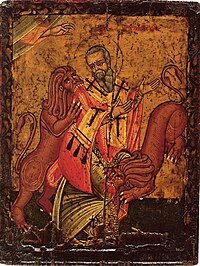
Photo from wikipedia
The term “paratext” was coined by Gérard Genette in his 1987 book Seuils, translated into English in 1997 as Paratexts: Thresholds of Interpretation. Writing of literature, Genette used the term… Click to show full abstract
The term “paratext” was coined by Gérard Genette in his 1987 book Seuils, translated into English in 1997 as Paratexts: Thresholds of Interpretation. Writing of literature, Genette used the term to describe all those things that surround the actual literary work that we may be inclined to consider not wholly a part of it, but that nevertheless append themselves to it, whether physically, as with book covers, prefaces, afterwords, and choices over paperstock and typeface, or conceptually, as with reviews, interviews, ads, and promotional materials. His point was that these matter, that they regularly change, edit, revise, or outright create meaning: since we regularly do “judge a book by its cover,” Genette argued that textual analysis must account for the meanings that covers and their paratextual colleagues create. Several years after its publication, various media and communication studies scholars began applying the term to film, television, and other media, finding it a handy term to encompass the huge world of promos, hype, trailers, merchandise, licensed games, DVD bonus materials, ancillaries, transmedia extensions, fan texts, and more, and similarly calling for greater attention to their roles in creating media culture, meaning, and power. Both of us contributed to a sort of “first round” of work flagging the paratext’s existence, importance, and calling for more work on them (Rob especially through his and Robert Westerfelhaus’ 2002 article, “Hiding Homoeroticism in Plain View: The Fight Club DVD as Digital Closet,” Jonathan through his 2010 book, Show Sold Separately: Promos, Spoilers, and Other Media Paratexts). Now that we know that paratexts walk amongst us, though, and with the widespread and encouraging take-up of the term in media and communication studies, we thought a special issue was in order, taking stock of a burgeoning “second round” of work that moves beyond noting paratexts’ presence, and instead “gets on with it” and uses paratextual analysis to advance a wide and impressive range of academic debates. This issue therefore sees paratexts and paratextual theory intervening in discussions of cultural memory (Hills and Garde-Hansen), activism (Scott, Johnson), identity politics and representation (Nishime, Draper, Scott), game culture (Consalvo), production studies (Grainge), global media travels (Bernabo), branding (Aronczyk), celebrity culture (Draper), constructions of the nation (Hills and GardeHansen, Aronczyk), social media “filter bubbles” (Johnson), translation (Bernabo), textual recoding and/or modding (Nishime, Consalvo, Scott), and more, including how universities do business (Grainge). Aronczyk and Consalvo each further finesse our understandings of exactly what paratexts are and how they work, moreover.
Journal Title: Critical Studies in Media Communication
Year Published: 2017
Link to full text (if available)
Share on Social Media: Sign Up to like & get
recommendations!